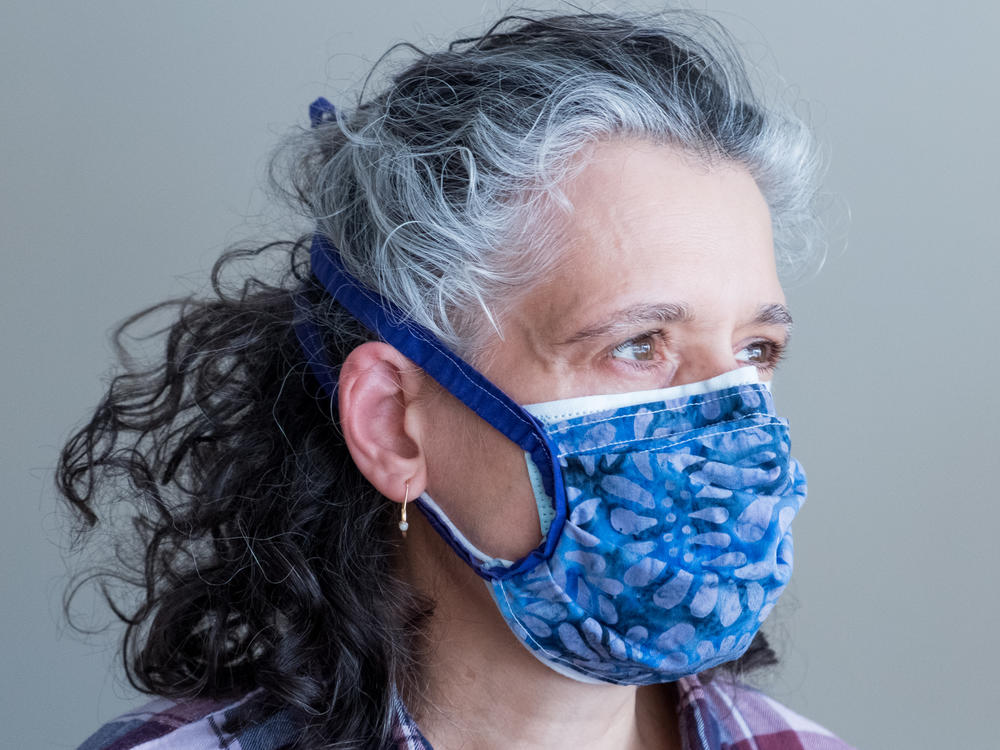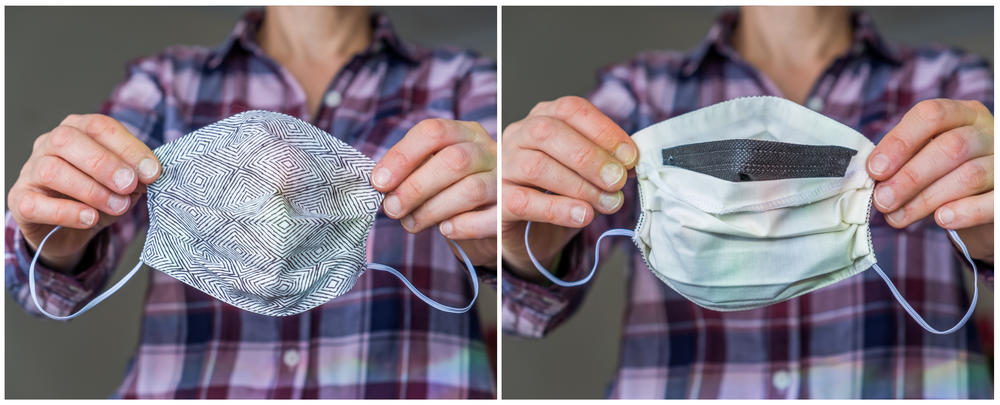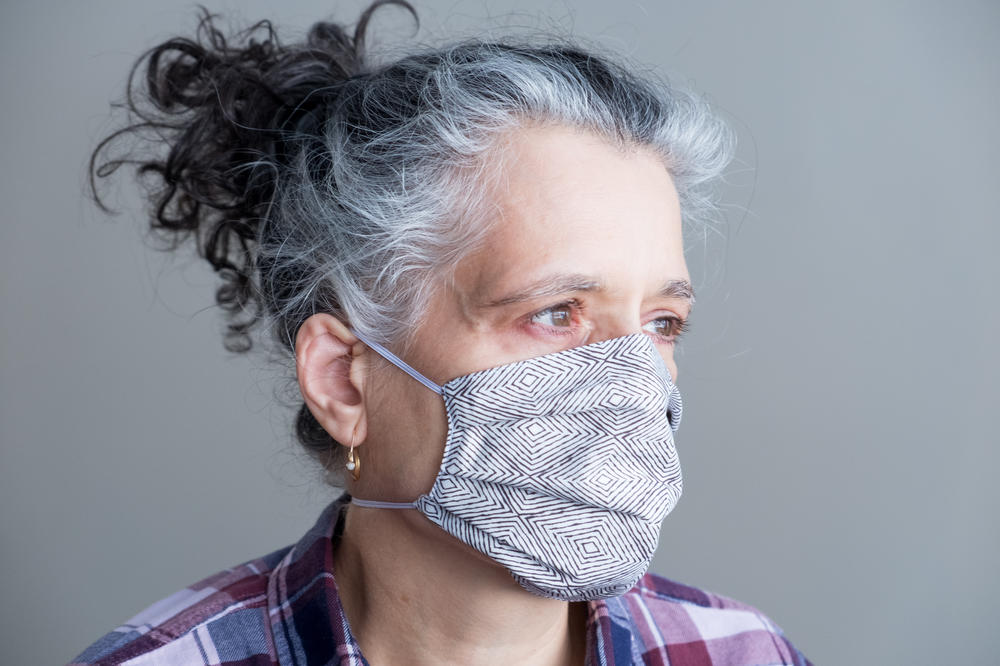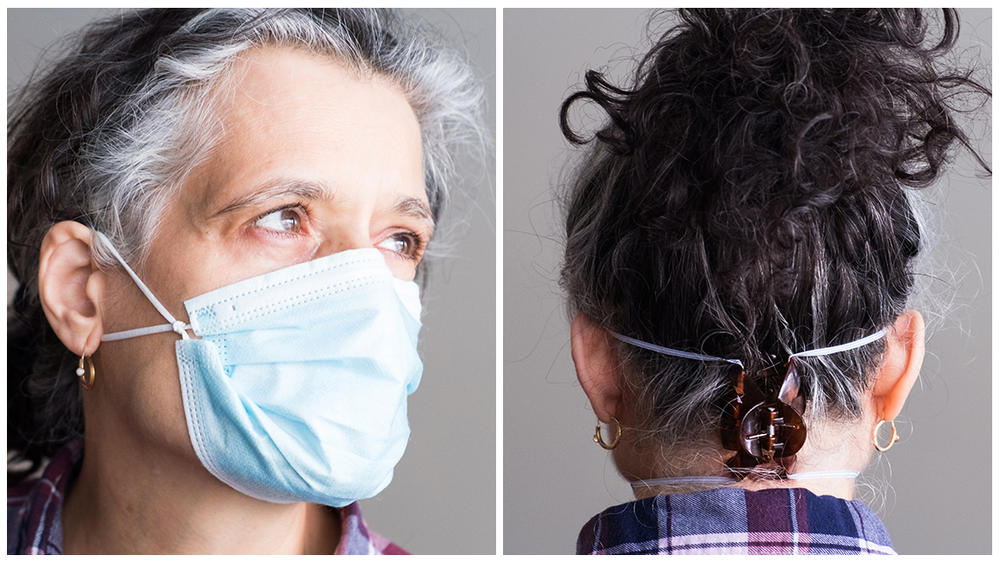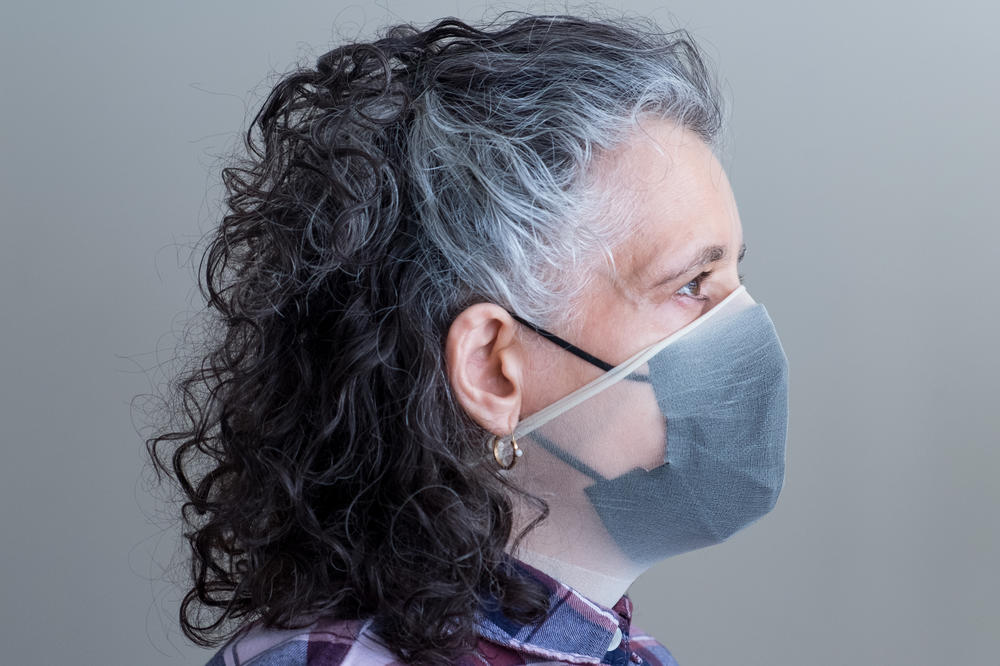Section Branding
Header Content
5 Hacks And Tips To Make Your Face Mask More Protective
Primary Content
It's time to up your mask game.
With new, more contagious strains of the coronavirus spreading in the U.S., and transmission levels still very high in many places, some public health experts recommend that Americans upgrade from the basic cloth masks that many have been wearing during the pandemic.
"A cloth mask might be 50% effective at blocking viruses and aerosols," says Linsey Marr, a researcher at Virginia Tech who studies airborne virus transmission. "We're at the point now ... that we need better than 50%."
When you're outdoors, where fresh air can quickly disperse virus droplets and smaller particles, a cloth mask is still fine, Marr says. But infectious particles can accumulate indoors, and that's when you want a better mask. "I am now wearing my best mask to the grocery store. I wasn't before," Marr says.
Ideally, we would all be wearing medical-grade N95 respirators – so-called because they block out at least 95% of particles when worn correctly. But even now, N95s remain in short supply for consumers, and the Centers for Disease Control and Prevention still says they should be reserved for health care workers.
Luckily, there are other ways to seriously boost the protection your face mask offers. Here's how.
1. Wear two masks
The concept of double-masking has gotten a lot of attention lately, especially after Dr. Anthony Fauci, America's top infectious disease expert, touted it on the TODAY show.
Start with a surgical mask closest to your face, says Marr, and then add a cloth one on top. You want a surgical mask made out of a nonwoven material called polypropylene, because that material holds an electrostatic charge that allows it to trap particles. (Some surgical masks are made of paper.)
The downside of surgical masks is that many of them fit loosely — and a mask's ability to filter out particles depends partly on how well it seals to your face. By layering a cloth mask on top, you can achieve a tighter fit while also adding an extra layer of filtration, says Marr, who co-wrote a recent commentary recommending double-masking.
But don't keep piling on masks, Marr warns; just one additional mask is plenty. If your masks become too hard to breathe through, air will leak in and out through the sides instead. "Then it's like you have a hole in your mask," she says.
Even if you start out with two masks that are each only around 50% effective at blocking out particles, when you layer one on top of the other, you can end up with a combination that is 75% effective or more, Marr says.
Here's how Marr explains that math: "If you have 100 viruses that are flying toward your mask that is 50% effective, then 50 of them will be filtered out and 50 will pass through. When those 50 get to the second mask, 25 will be filtered out and 25 will pass through. Thus, the overall efficiency is 75%."
Dr. Monica Gandhi, an infectious disease physician at the University of California, San Francisco, says double-masking is especially important for people in specific circumstances: adults who work in crowded indoor environments and medically vulnerable people who are going into indoor spaces in areas with high transmission.
2. Add a filter
If doubling up just isn't your thing, you can achieve a similar boost in filtration efficiency by wearing a two-layer mask with a pocket for a filter, says Gandhi. The outer layers should be made of a tight-weave fabric.
Marr suggests using a surgical mask in the filter pocket. (You can cut the surgical mask to fit the pocket if need be.) She says HEPA filters cut out from the filters used in portable air cleaners work very well (here's her how-to video); a PM2.5 carbon filter should also do the trick, as long as it is flexible.
Another filter option: a material available at fabric stores called spunbond, also sold under the brand name Oly-Fun. It's made out of polypropylene, so it also uses the power of static electricity to trap particles.
Adding a filter made out of two layers of polypropylene could boost a cotton mask's filtration efficiency by as much as 35%, Stanford University researcher Yi Cui, told NPR last year.
And for a homemade option, Cui's research has found that two facial tissues, folded over to form a four-layer filter, can also do a decent job of boosting a mask's protection. But please, don't reach for a coffee filter: Both Marr and Christopher Zangmeister, a researcher at the National Institute of Standards and Technology, note that these filters are hard to breathe through, so you end up breathing around the filter rather than through it.
3. Choose a better cloth mask
If you're still single-masking, just make sure the one you wear is as protective as it can be. As Gandhi recently wrote on Twitter, "There is a still role for basic masks."
When it comes to cloth masks, look for a fabric with a tight weave. Multiple studies have shown that 100% cotton is a good bet (think dress-shirt cotton or quilter's cotton rather than a t-shirt).
As Zangmeister explained to NPR last year, natural fibers in cotton tend to have more three-dimensional structure than synthetic fibers, which are smoother. And that 3D structure can create more roadblocks that can stop an incoming particle. That said, filtration tests have shown that some masks made of other fabrics, like an engineered knit, can be highly effective.
Also look for three layers in your mask: Studies have shown that a three-layer mask made from tightly woven fabric work well.
For more detailed advice on choosing a cloth mask, see NPR's guide on choosing a more protective cloth mask.
4. Make your mask fit tighter
To maximize your mask's effectiveness, make sure that it fits snugly over your mouth and nostrils, up to your nose bridge and that you don't see any gaps. And please, don't let your nose hang over your mask – that defeats the purpose!
A mask's filtration efficiency varies depending on how well it conforms to your face, as a recent study in JAMA Internal Medicine illustrates. Researchers found that the surgical masks they tested blocked out just 38.5% of small particles on average when worn normally. But filtration efficiency jumped when they tried various hacks to make the mask seal better.
One trick they tested: Tie the ear loops into a knot as close to the edges of the mask as possible, then tuck the side pleats in to minimize any gaps that appear along the edges, as in the left photo, below. This boosted the surgical mask's filtration efficiency to 60%.
Another simple hack is to use a hair clip, as in the photo above at right to hold the ear loops tightly at the back of the head. That raised the mask's filtration efficiency to nearly 65%.
And the final, most effective hack? It involves a pair of pantyhose. When the researchers covered the surgical mask with a 10-inch section of nylon hosiery, filtration efficiency surged to an impressive 80%.
It may look silly, but it's effective — and fairly comfortable. If you want to try this trick, cut a ring of material from the thigh area on a pair of pantyhose — about 8 to 10 inches long, top to bottom. (Pro tip: Use queen-size hosiery for a more comfortable fit.)
Then pull the ring over your head and on top of your mask to create a tight fit to the face. Tights should also work well, says Loretta Fernandez, an assistant professor of civil and environmental engineering at Northeastern University who conducted prior research on the power of pantyhose.
5. Consider KN95s and KF94s
While N95s remain scarce, KN95 respirators are pretty easy to score these days. KN95s are regulated by the Chinese government, and, like N95s, they're supposed to filter out at least 95% of small airborne particles, although the testing standards differ in each country.
Be warned: The market is awash with fake KN95s, and testing has revealed that some of these counterfeits are pretty much useless. If you want to buy one, check the Food and Drug Administration's list of authorized models and vendors. (You'll need to scroll down to Appendix A).
NIOSH has also performed limited assessments to gauge the filtration efficiency of foreign-made respirators. Check this link for the results, which are updated regularly.
Lately, another foreign-made respirator, the KF94, has also gotten a lot of buzz. The KF stands for "Korean filter" – the mask is made in South Korea – and the 94 means it's designed to block out at least 94% of small particles. It looks like an N95, but with side flaps that mold to the contours of your face and an adjustable band around the bridge of your nose.
As Stephen Morse, an epidemiology professor at Columbia University, told NPR recently, in South Korea, the KF94 is intended for public use. But again, watch out for counterfeits.
If you opt for one of these respirators, make sure they also fit tightly to your face. And remember, no matter what you choose, the best mask is ultimately the one you will wear consistently.
Copyright 2021 NPR. To see more, visit https://www.npr.org.
